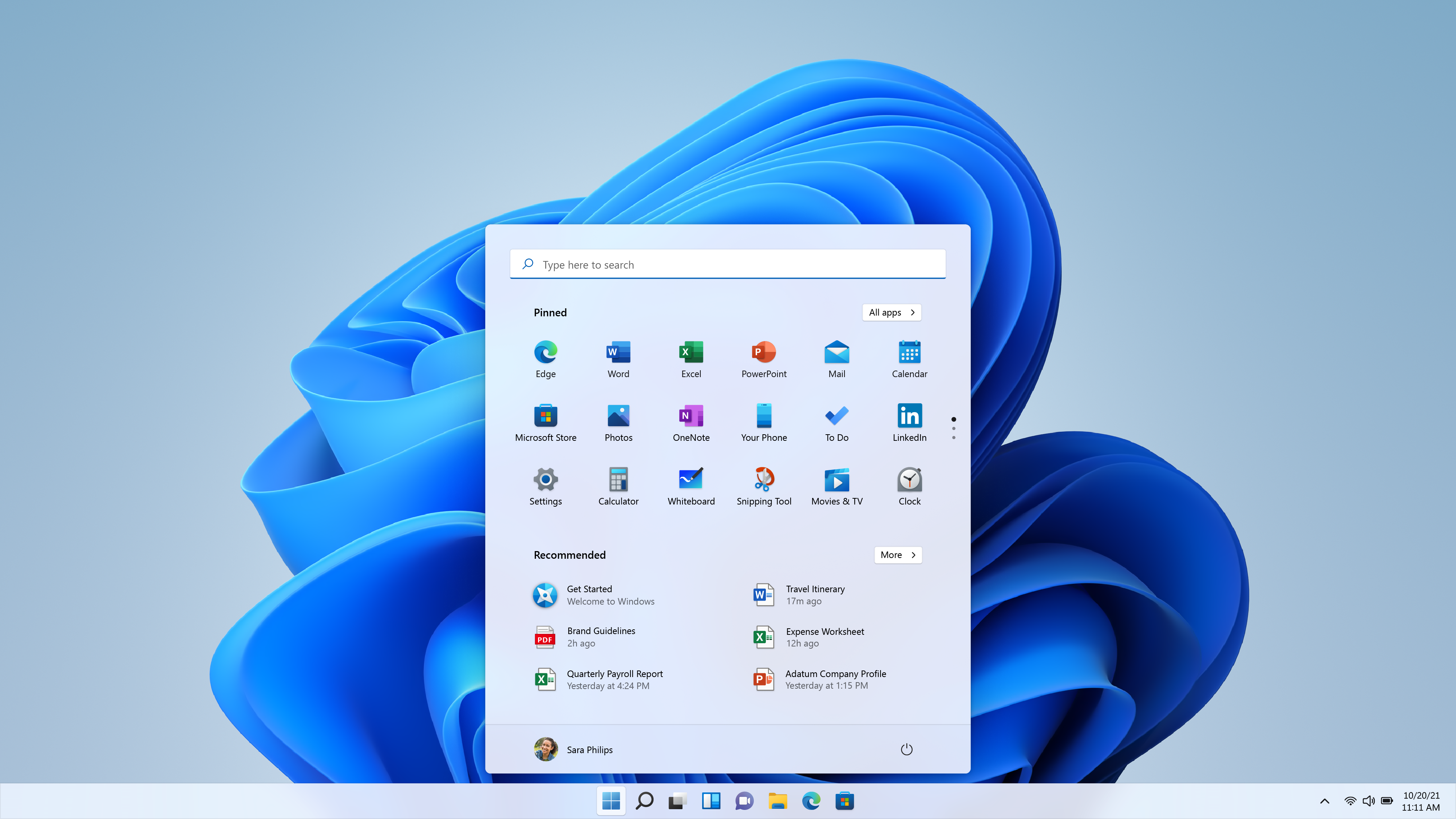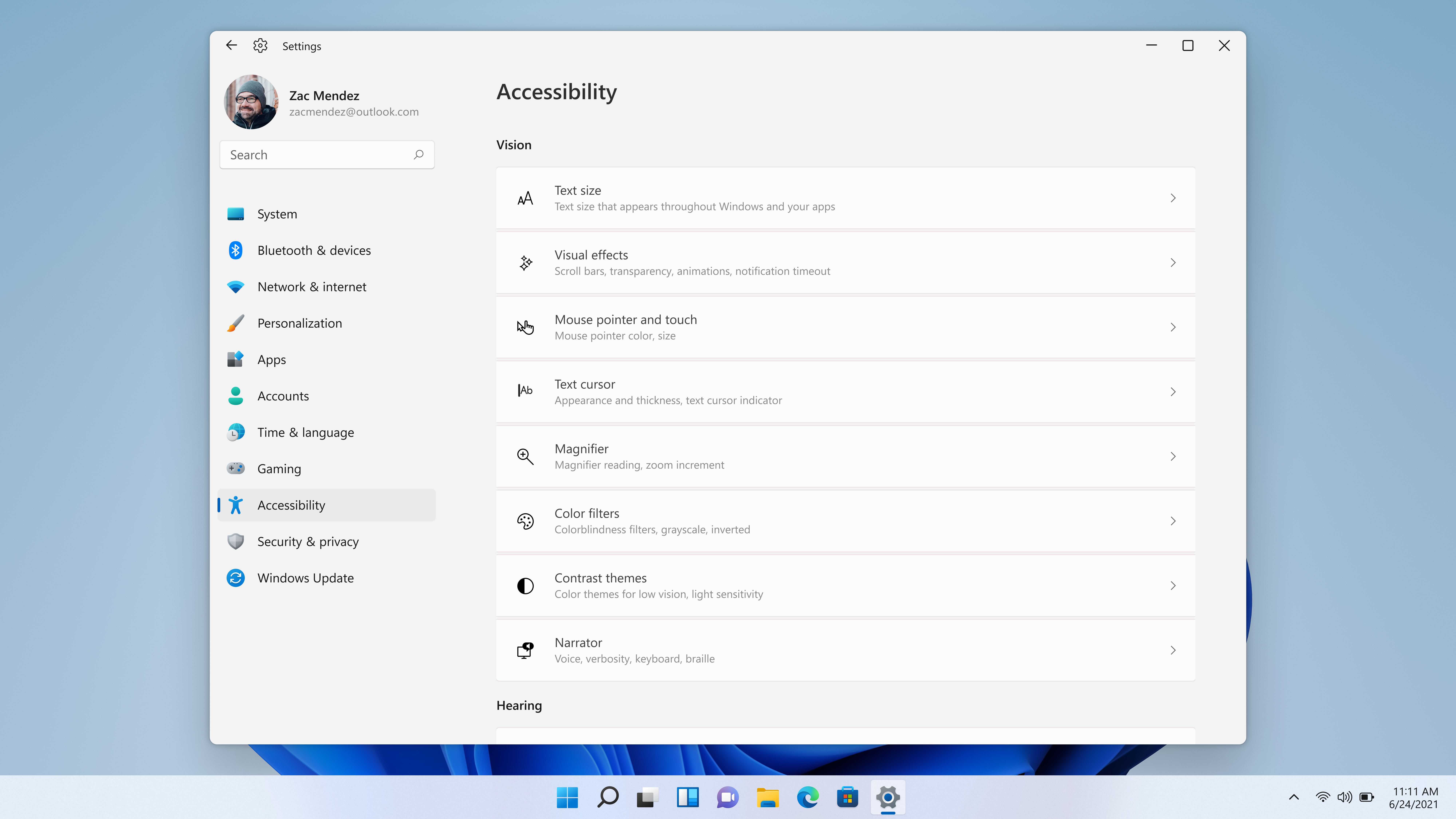What’s coming in Windows 11 Accessibility
Today, I’m excited to share more information about the Windows 11 accessibility journey.
Earlier this year, Microsoft announced its upped commitments and ambitions for accessibility. And, we recently introduced Windows 11. An early preview of Windows 11 is available to Windows Insiders today and will start to be generally available later this year. I’m excited to share our ambition to empower people with disabilities to achieve more with Windows and more specifically, what’s coming in Windows 11. Note, this is a lengthy post, we’ve got a lot to share.
Beyond possible, efficient and yes, delightful
Accessible technology is a fundamental building block that can unlock opportunities in every part of society. A more accessible Windows experience has the power to help tackle the “disability divide” — to contribute to more education and employment opportunities for people with disabilities across the world.
Already, more than a billion people enjoy creating, connecting, learning and achieving on Windows. Beyond simply making these things possible, we aspire for each of our users across the disability spectrum to enjoy experiences that are efficient, fun and yes, delightful.
Windows has a great opportunity. Our ambition is shaped by you. We have a lot to do, and what’s outlined below is just the start. Information about how to reach us to provide feedback or for assistance with Windows is included at the end of this post.
Windows 11 is the most inclusively designed version of Windows
Windows 11 was redesigned for productivity, creativity and ease of use. While it will feel familiar, e.g., with a Desktop, Start menu, Search, Taskbar, Settings and many other features that you have come to expect, it is also simpler, with a modern, fresh and clean design. Accessibility was considered from the start, with inclusive design reviews of new and redesigned features. And, beyond designing for accessibility with and for people with disabilities, we employed Trusted Tester conformance tests, usability tests and other processes to help ensure Windows 11 is accessible at availability later this year. Meanwhile, we’re excited to gather additional feedback from Windows Insiders about how we can further improve the experience. If you’re not a Windows Insider yet, now is the time to join!

Windows 11 offers familiar assistive technologies like Narrator, Magnifier, Closed Captions and Windows Speech Recognition to support users across the disability spectrum. Windows 11 also supports assistive technologies created by our partners including popular screen readers, magnification programs, CART services, speech commanding and other experiences.
Windows 11 also includes many improvements.
People who are blind, and everyone, can enjoy new sound schemes. Windows 11 includes delightful Windows start-up and other sounds, including different sounds for more accessible Light and Dark Themes. People with light sensitivity and people working for extended periods of time can enjoy beautiful color themes, including new Dark themes and reimagined High Contrast Themes. The new Contrast Themes include aesthetically pleasing, customizable color combinations that make apps and content easier to see.
Deaf and hard of hearing, language learners, and people in noisy or in quiet environments can enjoy redesigned Closed Caption themes that are easier to read and customize.
And, multiple sets of users can enjoy Windows Voice Typing, which uses state-of-the-art artificial intelligence to recognize speech, transcribe and automatically punctuate text. People with severe arthritis, repetitive stress injuries, cerebral palsy and other mobility related disabilities, learning differences including with severe spelling disabilities, language learners and people that prefer to write with their voice can all enjoy Voice Typing.
Ultimately, everyone can enjoy Windows’ simplified design and user experience. It is modern, fresh, clean and beautiful.
Windows accessibility features are easier to find and use
Importantly, more than improving existing accessibility features, introducing new features and making users’ preferred assistive technology compatible with Windows 11, we are making accessibility features easier to find and use. You gave us feedback that the purpose of the “Ease of Access” Settings and icon was unclear. And you said that you expected to find “Accessibility” settings. We listened and we changed Windows. We rebranded Ease of Access Settings to Accessibility and introduced a new accessibility “human” icon. We redesigned the Accessibility Settings to make them easier to use. And of course, Accessibility features are available in the out of box experience and on the Log on and Lock screens so that users can independently setup and use their devices, e.g., with Narrator.

Windows accessibility just works in more scenarios
Windows 11 is a significant step towards a future in which accessibility “just works,” without costly plug-ins or time-consuming work by Information Technology administrators. With Windows 10, we made it possible for assistive technologies to work with secure applications, like Word, in Windows Defender Application Guard (WDAG). With Windows 11, we made it possible for both Microsoft and partner assistive technologies to work with applications like Outlook hosted in the cloud, in Azure Virtual Desktop (AVD). For example, with Windows 11, Office is accessible as a Remote Application Integrated Locally (RAIL) using Narrator. While that may sound like a lot of jargon to most people, the impact is significant. People who are blind will have access to applications like Office hosted in Azure when they need it.
Windows 11 will also support Linux GUI apps like gedit through the Windows Subsystem for Linux (WSL) on devices that meet the app system requirements. And, we enabled these experiences to be accessible. For example, people who are blind can use Windows with supported screen readers within WSL. In some cases, the assistive technology experience is seamless. For example, Color Filters, “just work.” Importantly, the WSL team prioritized accessibility from the start and committed to enable accessible experiences at launch. They are excited to share more with Insiders and to get feedback to continue to refine the usability of their experiences.
We look forward to sharing more about other new experiences we introduced last week like our partnership with Amazon to bring Android apps to Windows in the coming months.
Modern accessibility platform is great for the assistive technology ecosystem
Finally, I am happy to share that we have been working closely with assistive technology industry leaders to co-engineer what we call the “modern accessibility platform.” Windows 11 delivers a platform that enables more responsive experiences and more agile development, including access to application data without requiring changes to Windows.
We embraced feedback from industry partners that we need to make assistive technology more responsive by design. We embraced the design constraints of making local assistive technology like Narrator “just work” with cloud hosted apps over a network. We invented and co-engineered new Application Programming Interfaces (APIs) to do both; to improve the communication between assistive technologies like Narrator and applications like Outlook that significantly improve Narrator responsiveness in some scenarios. The result is that Narrator feels more responsive and works over a network with cloud-hosted apps.
We also embraced feedback from industry partners that we need to increase assistive technology and application developer agility to increase the pace of innovation and user experience improvements. We made it possible for application developers, like Microsoft Office, to expose data programmatically without requiring Windows updates. With Windows 11, application developers will be able to implement UI Automation custom extensions, including custom properties, patterns and annotations that can be consumed by assistive technologies. For users, this means we can develop usability and other improvements at the speed of apps.
Try Windows 11 and give us feedback
An early preview build of Windows 11 is now available to Windows Insiders. And, later this year, Windows 11 will start to be generally available. I’m excited for your feedback — both positive and constructive — to create better experiences for each of us. Whether you’re using an Insider build, or a generally available version, Windows 10 and Windows 11 make it easy to share your thoughts and suggestions — just press the Windows logo key + F to launch the Feedback hub and share what’s top of mind.
Finally, if you are a customer with a disability and need technical assistance, the Disability Answer Desk is there to assist via phone (800-936-5900) and chat. In addition, we also have an ASL option available for our customers who are deaf or hard of hearing in the U.S. (+1 503-427-1234). Please contact us, we are always happy to help.
